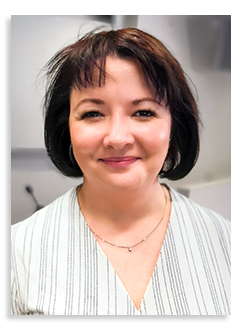
Click image for HiRes
Abstract
By 2025 about 75 billion IoT devices will be installed, of which the majority will reside in ambient conditions. It is therefore crucial to find an energy source that yields high efficiencies in this environment. At high efficiencies under ambient light, while being more environmentally friendly, sustainable to produce and to recycle. Dye-sensitized solar cells (DSCs) are known for efficient conversion of ambient light. Fast charge separation in a variety of organic dyes and tuneable energy levels in CuII/I redox systems combined with negligible recombination processes allow DSCs to maintain a high photovoltage under ambient light.1
We tailored dye-sensitized photovoltaic cells based on a copper (II/I) coordination complexes hole transport material for power generation under ambient lighting with an unprecedented conversion efficiency of PCE 38 %, at 1000 lux from a fluorescent lamp using a novel co-sensitization strategy2,3 and electrolyte modifications. Under 1000 lux lighting, 64 cm2 photovoltaic area gives 152 J or 4.41 1020 photons sufficient energy for training and testing of an artificial neural network in less than 24 hours. The implementation of a long short-term memory (LSTM) based energy management on-device predicts changing deployment environments and adapts its computational load accordingly to perpetually operate the energy-harvesting circuit and avoid power losses or brownouts. Ambient light harvesters enable a new generation of self-powered and self-aware IoT device to be powered by a previously untapped energy source.4,5
References
1. Muñoz-García, A. B. et al. Dye-sensitized solar cells strike back. Chemical Society Reviews 50, 12450–12550 (2021).
2. Michaels, H. et al. Dye-sensitized solar cells under ambient light powering machine learning: towards autonomous smart sensors for the internet of things. Chemical Science 11, 2895–2906 (2020).
3. Freitag, M. et al. Dye-sensitized solar cells for efficient power generation under ambient lighting. Nature Photonics 11, 372–378 (2017).
4. Michaels, H., Benesperi, I. & Freitag, M. Challenges and prospects of ambient hybrid solar cell applications. Chemical Science (2021) doi:10.1039/D0SC06477G.
5. Benesperi, I., Michaels, H. & Freitag, M. The researcher’s guide to solid-state dye-sensitized solar cells. Journal of Materials Chemistry C (2018) doi:10.1039/C8TC03542C.
Click here to see all available video seminars.
Click here to go to the SPREE HOMEPAGE.
Brief Bio
Dr Marina Freitag is currently a Reader in Energy Materials and a Royal Society University Research Fellow at Newcastle University, UK. She is developing new light-driven technologies that incorporate coordination polymers to solve the most important challenges in the research area, including issues of sustainability, stability, and performance of hybrid PV.
The development of such highly innovative concepts has given Marina international recognition, including being a recipient of the prestigious 2022 Royal Society of Chemistry Harrison-Meldola Memorial Prize 2022, and placed her at the heart of a new wave of sustainable optoelectronic devices. Her research into hybrid molecular devices began during her doctoral studies (2007-2011, Rutgers University, NJ, USA) where she was awarded an Electrochemical Society Travel Award and Dean Dissertation Fellowship 2011.
Dr Freitag moved to Uppsala University (2013-2015) for a postdoctoral research position, which focused on the implementation of alternative redox mediators, leading to a breakthrough today known as “zombie solar cells”. Dr Freitag was invited to further develop this work at École Polytechnique Fédérale de Lausanne (EPFL) with Prof. Anders Hagfeldt (2015- 2016). From 2016-2020 she was appointed as Assistant Professor at Uppsala University, Sweden, where she received the Göran Gustaffsson Young Researcher Award 2019.
